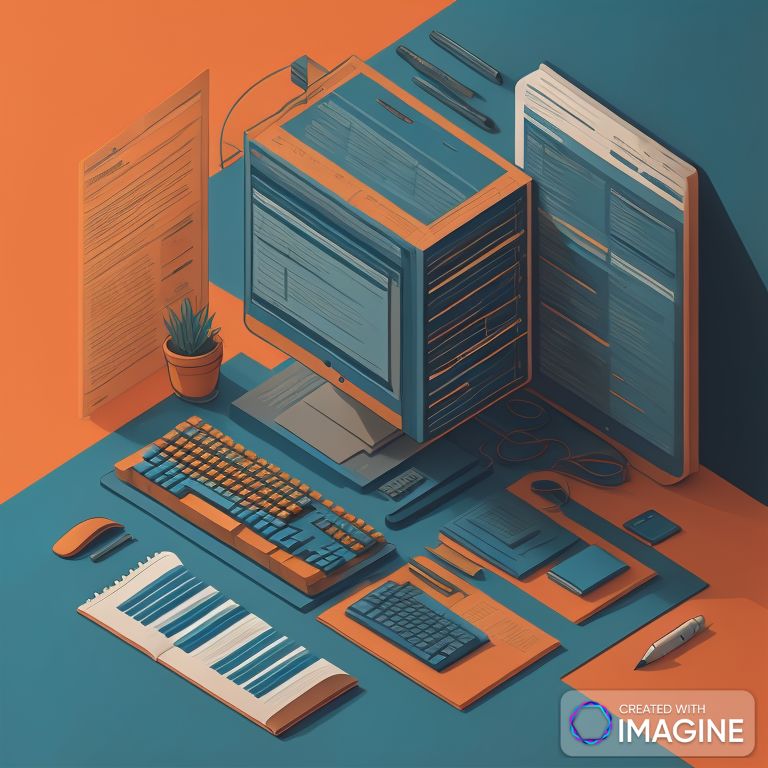Introduction
Programming languages are the backbone of software development, enabling us to instruct computers to perform tasks, solve problems, and create complex systems. This blog post explores the development of programming languages, their syntax, the people who invented them, their applications, and the processes involved in creating new languages. We will also discuss the various types of programming languages, their specifications, and the skill set and mindset required to develop them.
The Evolution of Programming Languages
Early Beginnings
- Assembly Language: The first generation of programming languages, assembly languages, were created in the 1940s and 1950s. They are low-level languages that provide a symbolic representation of machine code. Each instruction corresponds to a specific machine operation.
- FORTRAN (1957): Invented by John Backus and his team at IBM, FORTRAN (FORmula TRANslation) was the first high-level programming language. It was designed for scientific and engineering calculations.
- Machine Code: Before the advent of high-level languages, programmers wrote instructions directly in machine code, which consists of binary digits. This method was arduous and error-prone, highlighting the need for more human-readable forms of code.
- BASIC (1964): Developed by John G. Kemeny and Thomas E. Kurtz at Dartmouth College, BASIC (Beginner’s All-purpose Symbolic Instruction Code) aimed to make programming accessible to students and beginners, democratizing computer programming.
Development of High-Level Languages
- COBOL (1959): Developed by Grace Hopper and others, COBOL (COmmon Business-Oriented Language) was created for business data processing.
- LISP (1958): John McCarthy at MIT invented LISP (LISt Processing), a language suited for artificial intelligence research and symbolic computation.
- ALGOL (1958): Created by a committee of European and American computer scientists, ALGOL (ALGOrithmic Language) influenced many later languages, including C and Pascal.
- C (1972): Dennis Ritchie at Bell Labs developed C, which became one of the most widely used programming languages. Its design allows for low-level memory manipulation, making it suitable for system programming.
- PL/I (1964): IBM developed PL/I (Programming Language One) to combine features of scientific and business languages, making it versatile for various applications.
- Simula (1967): Created by Ole-Johan Dahl and Kristen Nygaard, Simula is credited as the first object-oriented programming language, introducing concepts such as classes and objects, which are foundational to modern software design.
- Pascal (1970): Designed by Niklaus Wirth, Pascal aimed to encourage good programming practices using structured programming and data structuring.
Modern Programming Languages
- Java (1995): James Gosling and his team at Sun Microsystems developed Java as a platform-independent language. Its “write once, run anywhere” capability makes it ideal for web and mobile applications.
- Python (1991): Created by Guido van Rossum, Python is known for its simplicity and readability. It is widely used in web development, scientific computing, and artificial intelligence.
- JavaScript (1995): Brendan Eich at Netscape developed JavaScript for web development, allowing dynamic and interactive content on websites.
- Ruby (1995): Yukihiro Matsumoto designed Ruby with a focus on simplicity and productivity. It is popular in web development, particularly with the Ruby on Rails framework.
- Swift (2014): Developed by Apple, Swift is designed for iOS and macOS app development, providing modern syntax and safety features.
- Perl (1987): Larry Wall developed Perl (Practical Extraction and Report Language) for text manipulation and report generation. Perl is known for its powerful regular expression capabilities.
- PHP (1995): Created by Rasmus Lerdorf, PHP (Hypertext Preprocessor) is widely used for server-side scripting in web development, enabling dynamic content generation.
- C# (2000): Developed by Microsoft, C# (C Sharp) is a modern, object-oriented language designed for building a wide range of applications that run on the .NET Framework.
- Go (2009): Developed by Google, Go (also known as Golang) is designed for systems programming with features like garbage collection, concurrency support, and strong typing.
The Syntax of Programming Languages
- Syntax Rules: Each programming language has its own syntax rules, which define how code must be written and structured. Syntax includes keywords, operators, punctuation, and the overall structure of code.
- Readability and Maintainability: Good syntax design aims to make code readable and maintainable. This includes using meaningful variable names, clear structure, and appropriate commenting.
- Language Paradigms: Programming languages can be categorized based on paradigms such as procedural, object-oriented, functional, and logic programming. Each paradigm influences the syntax and structure of the language.
- Syntax Flexibility: Some languages, like Python, emphasize readability and simplicity, while others, like C++, provide extensive syntax for fine-grained control and performance optimization.
Applications and Purposes of Programming Languages
- System Programming: Languages like C and C++ are used for developing operating systems, compilers, and embedded systems due to their performance and low-level memory access.
- Web Development: JavaScript, HTML, and CSS are essential for front-end web development. Back-end development often uses languages like Python, Ruby, PHP, and Java.
- Mobile App Development: Swift and Objective-C are used for iOS apps, while Java and Kotlin are common for Android apps.
- Artificial Intelligence and Machine Learning: Python is the dominant language in AI/ML, with libraries like TensorFlow and PyTorch. LISP and Prolog are also historically significant in AI research.
- Blockchain Development: Solidity is used for developing smart contracts on the Ethereum blockchain. Other languages like Rust and Go are also used in blockchain development.
- Scientific Computing: FORTRAN and Python are widely used in scientific computing due to their numerical and analytical capabilities.
- Data Science: Languages like R and Julia are tailored for statistical analysis and data visualization, providing libraries and tools for data scientists.
- Embedded Systems: Assembly language and C are commonly used in embedded systems for their low-level hardware access and efficiency.
- Game Development: C++ and C# are popular in game development due to their performance and compatibility with game engines like Unity and Unreal Engine.
- Networking: Languages such as Erlang are designed for building scalable and fault-tolerant distributed systems, making them ideal for telecommunications and networked applications.
The Process of Inventing and Developing New Programming Languages
Identifying the Need
- Problem Identification: The process begins with identifying a problem or gap in existing languages. This could be related to performance, ease of use, platform compatibility, or specific application requirements.
- Defining Objectives: Clear objectives and goals are set for the new language, including its target audience, use cases, and unique features.
- Conceptualization
- Identifying Gaps: Language inventors start by identifying specific needs or inefficiencies in existing languages. This could be related to performance, ease of use, security, or compatibility.
- Target Audience: Defining the target audience is crucial. Whether it’s developers, data scientists, or system administrators, understanding their needs helps shape the language’s features and design.
Design and Development
- Syntax Design: Designing a clear and intuitive syntax is crucial. It should balance simplicity with the ability to express complex ideas.
- Semantic Definition: Defining the semantics involves specifying how the syntax translates to machine operations and how the language behaves during execution.
- Implementation: This includes developing a compiler or interpreter to translate the high-level code into machine code. It also involves creating standard libraries and development tools.
- Testing and Iteration: Extensive testing is required to ensure the language functions correctly and efficiently. Iterative development and feedback from users help refine the language.
- Language Constructs: Decisions about language constructs, such as data types, control structures, and syntax rules, are made during the design phase. These decisions impact the language’s expressiveness and ease of use.
- Toolchain Development: Creating a comprehensive toolchain, including compilers, interpreters, debuggers, and integrated development environments (IDEs), is essential for language adoption and usability.
Community and Ecosystem
- Building a Community: Successful programming languages often have strong communities that contribute to libraries, frameworks, and tools, enhancing the language’s ecosystem.
- Documentation and Support: Providing thorough documentation and support resources is critical for helping new users learn and adopt the language.
Types of Programming Languages
Low-Level Languages
- Assembly Language: Provides a direct mapping to machine code, offering fine-grained control over hardware but requiring detailed knowledge of the computer’s architecture.
Domain-Specific Languages
- SQL: Structured Query Language (SQL) is specifically designed for managing and querying relational databases, providing a powerful tool for data manipulation.
- MATLAB: Primarily used in engineering and scientific research, MATLAB excels in numerical computing and matrix operations.
Platform-Independent Languages
- Java: Known for its portability across different platforms due to the Java Virtual Machine (JVM).
- Python: Interpreted language that runs on various platforms with minimal modification.
Platform-Dependent Languages
- C: Often used for system-specific applications due to its low-level capabilities.
- Swift: Primarily used for Apple’s iOS and macOS platforms.
Specific Application Languages
- Web Development: JavaScript, HTML, CSS, PHP
- Mobile App Development: Swift, Java, Kotlin
- Artificial Intelligence: Python, LISP
- Blockchain: Solidity, Rust
Skill Set and Mindset for Developing Programming Languages
Aptitude and Skills
- Strong Programming Background: Deep understanding of multiple programming languages and their paradigms.
- Compiler Design: Knowledge of compiler and interpreter construction.
- Algorithm Design: Expertise in designing efficient algorithms and data structures.
- Problem-Solving: Strong analytical and problem-solving skills to address specific needs and challenges.
Technical Proficiency
- Deep Understanding of Existing Languages: A thorough knowledge of multiple programming languages and their paradigms is essential for identifying strengths and weaknesses and designing innovative solutions.
- Compiler Theory: Expertise in compiler theory and construction is crucial for translating high-level code into efficient machine code.
Mindset and Approach
- User-Centric Design: Prioritizing the needs and experiences of users helps ensure the language is practical and widely adopted.
- Iterative Development: Adopting an iterative approach allows for continuous feedback and improvement, ensuring the language evolves to meet user needs.
Mindset
- Innovation and Creativity: Ability to think creatively and design novel solutions.
- User-Centric Approach: Focus on creating a language that addresses the needs of its intended users.
- Attention to Detail: Meticulous attention to detail in syntax and semantic design.
- Collaboration and Feedback: Willingness to collaborate with other developers and incorporate feedback to improve the language.
Conclusion
The development of programming languages is a dynamic and evolving field, driven by the need to solve new problems and improve existing solutions. Understanding the history, design principles, and applications of programming languages provides valuable insights into their role in modern technology. Whether you’re a developer looking to learn a new language or an innovator aiming to create one, the interplay of syntax, semantics, and application is key to unlocking the full potential of programming languages.
Understanding the history, design principles, and applications of programming languages provides valuable insights into their role in modern technology.






